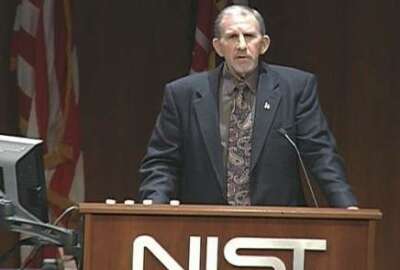President Donald Trump put the Office of Information and Regulatory Affairs in the spotlight early in his administration when, just 10 days after his inauguration, he signed an executive order that tasked agencies with cutting two outdated regulations to offset the costs of any new rule they proposed.
But more than two years after the executive order, acting OIRA Administrator Paul Ray said the administration’s deregulation goals are only one part of his office’s broader priorities.
OIRA, he said, serves a vital role as the central hub of the regulation-setting process, and gathers feedback on proposed rules from other agencies and White House offices to make sure the “federal government speaks with one voice” on proposed rules.
OIRA’s role in the review process also means tracking down complementary or competing policy reviews at other agencies to make sure a proposed rule at one agency doesn’t infringe on an existing rule elsewhere in the government.
“We ensure that the government takes action only after considering all aspects of a problem … weighing competing policy priorities — basically ensuring that that our right hand knows what our left is doing,” Ray said Sept. 13 at a conference at George Mason’s Antonin Antonin Scalia Law School.
While serving as the traffic controller for government regulations, OIRA’s regulatory review process has hit delays looking over the fifth update to one of the National Institute of Standards and Technology’s cybersecurity standards documents. As a result, that delay has also held up the release of six other cybersecurity and privacy updates from NIST.
George Washington University’s Regulatory Studies Center has found that since President Donald Trump took office, the number of “economically significant rules,” the number of “significant final rules” and the “final major rules” published remain lower than at any other point in the last 10-plus years.
Susan Dudley, a former OIRA administrator under President George W. Bush and now director of George Washington University’s Regulatory Studies Center, said OIRA provides a “dispassionate and analytical second opinion” on agency rule-makings that counter the “tunnel-vision” perspective agencies and interest groups might have on a particular issue.
Dudley said OIRA makes the business of agencies accountable to the president, but also to Congress, since the administrator often testifies before lawmakers on Capitol Hill.
The Carter administration created OIRA as part of the 1980 Paperwork Reduction Act, in order to better oversee a handful of regulatory agencies that had formed in the 1970s – including the Environmental Protection Agency, the Occupational Safety and Health Administration, and the Energy Department.
But President Ronald Reagan, just a year later, signed an executive order that gave OIRA its central role in the regulatory review process, and mandated agencies to perform a cost-benefit analysis for all major proposed rules.
Ray said the Trump administration remains “strongly behind the analytic principles” of the Reagan-era EO outlining OIRA’s mission. The fact that it still remains in force nearly 40 years later, he added, serves as a testament to the executive branch’s oversight.
“It means OIRA review has arisen not from the interplay of checks and balances among the three branches of government, in which each branch has incentives to limit the power of the others, but from executive self-restraint,” Ray said.
Copyright
© 2024 Federal News Network. All rights reserved. This website is not intended for users located within the European Economic Area.
